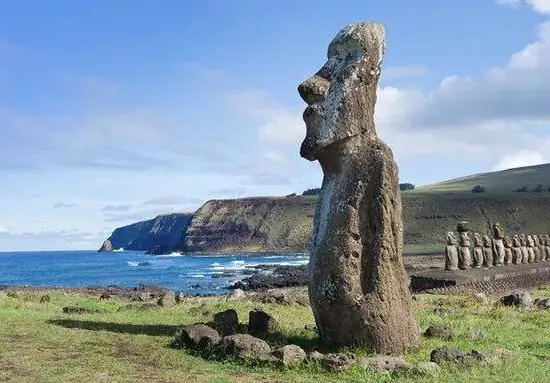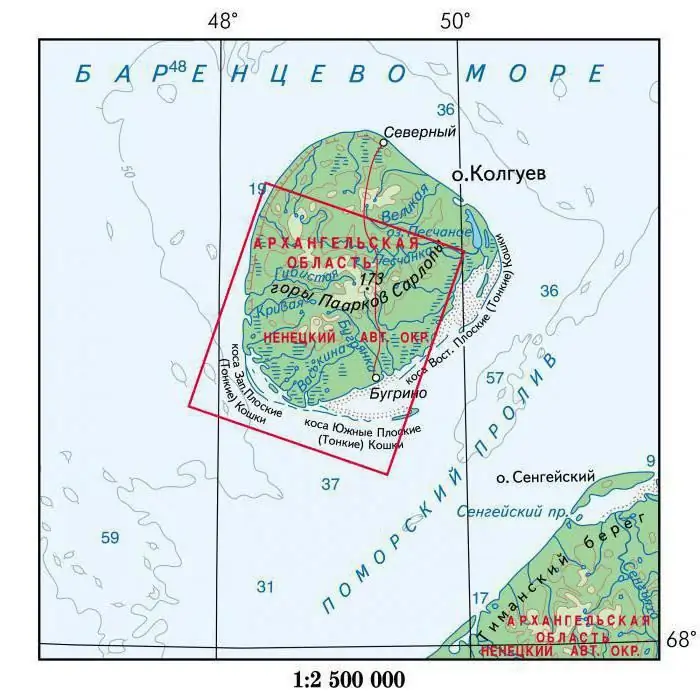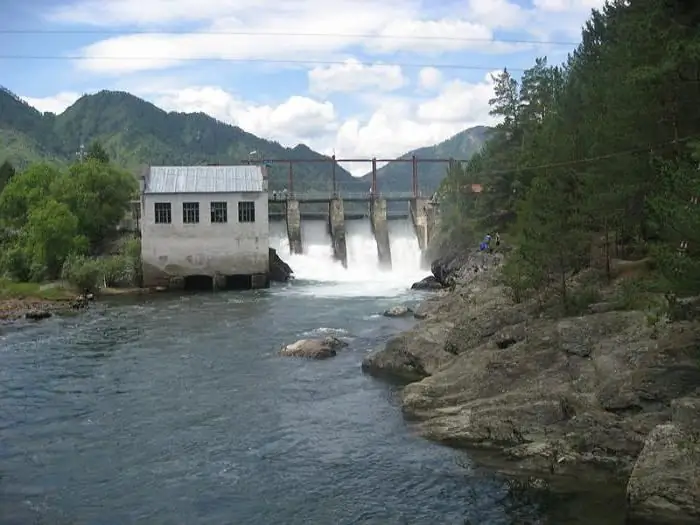- Author Harold Hamphrey [email protected].
- Public 2023-12-17 10:06.
- Last modified 2025-01-24 11:10.
Once upon a time, in the south of the Kamchatka Peninsula, in the lower reaches of the Amur, on Sakhalin and the Kuril Islands, the ancient people of the Ainu lived. These aborigines also inhabited the island of Shumshu. In 1711, Siberian traveler Ivan Kozyrevsky visited this northernmost of the Kuril Islands.

A detachment of Cossacks, led by him and Danila Antsyferov, landed on Shumshu in order to develop and annex a number of the Kuril Islands to Russia. In honor of Ivan Kozyrevsky, a bay and a cape are named on Shumshu. And in honor of Antsyferov, on the next occupied island, Paramushir, a volcano, a mountain and a cape are named. In addition, one of the 56 Kuril Islands has been named after him.
Orphan Islands
In 1787, 21 islands were officially annexed to the Russian Empire, including the island of Shumshu. Initially, the Russians began to develop these lands. And if you remember that on the eve of the negotiations in 1792, even Fr. Hokkaido was not Japanese territory, and the Kuriles did not belong to anyone at all, then the interest of Russian business people in justifying on unoccupied areas is quite understandable. But all the Romanovs, starting with Catherine II, did notshowed no interest in the Far East, and this is confirmed by the sale of Alaska.
Conditions for the return of the lost islands
After Russia's defeat in the Russo-Japanese War of 1904-1905, the Kuril Islands and South Sakhalin go to Japan, and the current Sakhalin Region is divided into two parts.

In 1945, the United States and Great Britain turned to the Soviet Union with a request to enter the war with Japan. The USSR promised to do this in exactly three months in exchange for the return of South Sakhalin and all the Kuril Islands. Our country kept its word.
Became famous
And here the previously unremarkable Shumshu enters the historical arena, separated from Kamchatka by the 1st Kuril Strait, the width of which in this place is 11 kilometers. Shumshu is separated from neighboring Paramushir by the 2nd strait of the same name, the width of which is only 2 km.

Description of the island can begin with its size. Its length is 30 km, width - 20. It is the lowest of all 56 islands. It has a small number of fresh water bodies, the largest of which can be called Bolshoye Lake. Ozernaya and Mayachnaya are two rivers flowing through its territory, the area of which is 388 square meters. km. The highest point of this island rises to 189 meters above sea level, and it is called High Mountain. Simple and understandable Russian names. What did he become famous for? The landing operation of the Soviet troops, carried out here in the month of August.
Final stageSoviet-Japanese War
This island was the scene of the last battle of the Second World War, in which tanks took part, and it was very cruel. The battle on the island of Shumshu was part of the Kuril landing operation, which lasted from 18 to 1 September. The purpose of the operation is to capture the Kuril Islands. It was carried out by the forces of the 2nd Far Eastern Front, commanded by General of the Army M. A. Purkaev, and the Pacific Fleet, headed by Admiral I. S. Yumashev. A successful operation has already been carried out in Manchuria, where the Kwantung Army was completely defeated. The offensive in this direction ended with the complete liberation of South Sakhalin. These successes created extremely favorable conditions for the liberation of the Kuril Islands from the Japanese.
Island militarization
On the northernmost island of Shumshu, there was the largest Japanese naval base, Kataoka, from which Japanese warships were sent to capture Pearl Harbor. There was also an airfield, the landing strips of which have survived to this day, and back in the 90s of the last century, L-410 aircraft, 19-seat twin-engine aircraft for local airlines, landing from Yelizovo (Kamchatka) landed here.

Soviet troops relied on the suddenness of the strike, the purpose of which was the island of Shumshu - capturing it and creating a bridgehead here for further capturing Paramushir, Onekotan and other islands, each of which had Japanese troops. Up to 80 thousand military personnel were concentrated here, 9 airfields were built, capable of accommodating about 600aircraft.
Impenetrable Fortress
Directly on the island of Shumshu there were 60 tanks belonging to the 11th tank regiment, 100 guns, and the garrison consisted of 8.5 thousand people. The whole island was a single well-fortified defensive system. Warehouses, hospitals, power plants and communication centers were hidden at a depth of 50-70 meters. Most of the guns were well camouflaged, and the Soviet command had no idea about them, and there were many false objects. Only 300 concrete bunkers were built on the island, antiamphibious defense structures were erected along the entire coast 3-4 km inland.
The surprise attack was also necessary because by that time the USSR, although it had reached an agreement with the United States on the complete return of the Kuriles and South Sakhalin, the slightest delay contributed to the occupation of any islands by American troops. Moreover, Hirohito, the Japanese emperor, on August 15 ordered the troops to prepare for surrender, mainly to the Americans. The suddenness of the attack, which was put at the forefront of the operation of the Soviet troops, in general, justified itself, except for the fact that Soviet soldiers died again during the capture of the northernmost island.
Component of the Soviet troops
The landing force, which was supposed to storm the island of Shumshu, included almost everything that the defensive area of Kamchatka had. The group itself consisted of 8,3 thousand military men, there were 118 guns and mortars, about 500 light and heavy machine guns. Airborne itselfThe grouping was divided into an advanced detachment and two divisions of the main forces. In addition, 64 ships and vessels, which included minesweepers, minelayers, a floating battery, transport ships, patrol boats and ships, torpedo boats and landing ships, were supposed to support the offensive. This armada was also divided into 4 parts - an artillery support detachment, a transport group, a landing party, trawling and security detachments. The Soviet offensive was supported by a mixed air division of 78 aircraft, and a coastal 130-mm battery located at Cape Lopatka. Shumshu Island (on the map below, this is clearly visible) is located very close to the extreme point of cape Lopatka.

Paratroopers against tanks
It should be noted that the soldiers were not fired upon and had not previously taken part in the battles, and forces from the western fronts were not transferred due to the strict secrecy of the operation. The forces were clearly not enough, and on the first day the ship grouping lost 9 ships, and 8 were damaged. Nevertheless, the advance detachment, consisting of 1,3 thousand people, managed to land on the shore and gain a foothold there. Of the 22 walkie-talkies on the shore, only one worked. The sailor G. V. Musorin, who delivered it, went under water, holding a priceless cargo above the surface of the sea. In general, as always, Russian soldiers and sailors showed miracles of courage - two of them repeated the feat of A. Matrosov. Actually, the forward detachment had only light weapons against Japanese tanks. The assault on Shumshu became a decisive event in the course of the entire landing operation, andthe turning point that determined the decisive victory of the Soviet troops was the capture of the highest point of the island - Mount High. And the Russians won.

Operation results
Already on August 20, Soviet ships went to Kataoka to accept the surrender, but were met with fire. As the landing progressed, the Japanese command each time agreed to surrender, but dragged with all its might the actual signing. On August 22, Fusaki Tsutsumi, who commanded the Japanese troops, accepted all the terms of surrender, and 20 thousand Japanese military surrendered: 12 on the island of Shumshu and 8 on Paramushir. In total, 30 thousand people surrendered in the northern islands.
The sad results of this operation were the human casu alties suffered by the Soviet side. 1567 people were lost, of which 416 were killed, 123 were missing (most likely drowned), and 1028 were wounded. The Japanese garrison of the island lost 1018 people, 300 of them were killed.
Our islands
As a result of the war, absolutely all the Kuril Islands went to our country, and the restored Sakhalin Region accepted them into its composition. Japan continues to claim the South Kuril Islands, calling them their northern territories.
Negotiations on the ownership of these islands, to which the Land of the Rising Sun has no rights, are still dragging on. Japan really wants, and the United States helps her in this, to appropriate the South Kuril Islands, rich in priceless, including recently discovered rhenium, metals. Japan and Russiaunreasonable behavior first will probably never agree.






